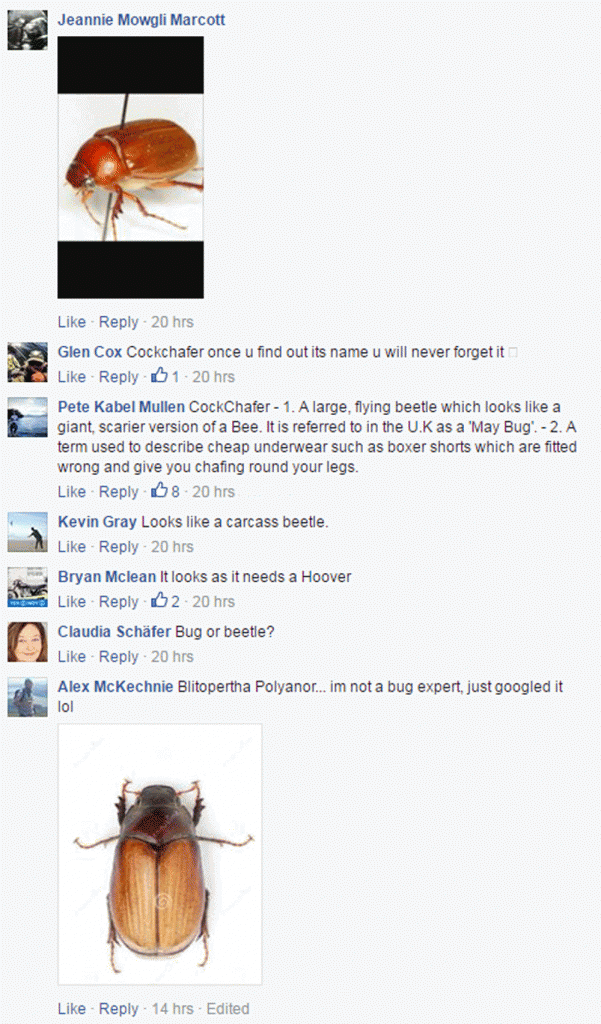A MONSTROUS bug has been spotted on the loose in Scotland.
A picture of the giant mystery beetle was posted on social media next to a 10p coin for scale.
Facebook users quickly spotted that the bug in question was a Cockchafer – officially known as a ‘Melolontha melolontha’ – and an insect rarely spotted north of the border.
The gruesome creatures can grow up to 46mm (1.8 inches) in length and produce a loud, high-pitched, buzzing noise as they fly.

Although they are harmless to humans, the Cockchafer’s larvae has been know to wreak havoc in gardens, attacking plants and causing grass to turn brown.
Dr George McGavin, resident insect expert on The One Show, looked at the picture and confirmed that the creepy crawly in question was indeed a dreaded Cockchafer.
Facebook user, Joanna Stebbings, uploaded a picture of the huge insect she spotted in Drumnadrochit, in the Scottish Highlands.
She asked: “Does anyone know what this is? That’s a 10p behind it. Never seen an insect this big in Scotland.”

Glen Cox wrote back: “Cockchafer, once you find out its name you will never forget it.”
Bruce Phillip responded to news of the insect’s name by saying: “I don’t like the sound of that!”
Pete Kabel Mullen described the name as: “A term used to describe cheap underwear such as boxer shorts which are fitted wrongly and give you chafing round your legs.”
Malky Reid referred to the size of the bug by simply saying it was a “horse”, whilst Lee Hill said they’d need to “send in the starship troopers to take care of it”.
Cockchafers are also commonly known as “Doodlebugs” or “Billy Witches” and are rare in the north of the UK.
They’re usually spotted buzzing around gardens in the South of England and start to appear in late April and May.
The large, noisy bugs can appear frightening to people with their loud humming sound and often crash loudly into well-lit windows.
